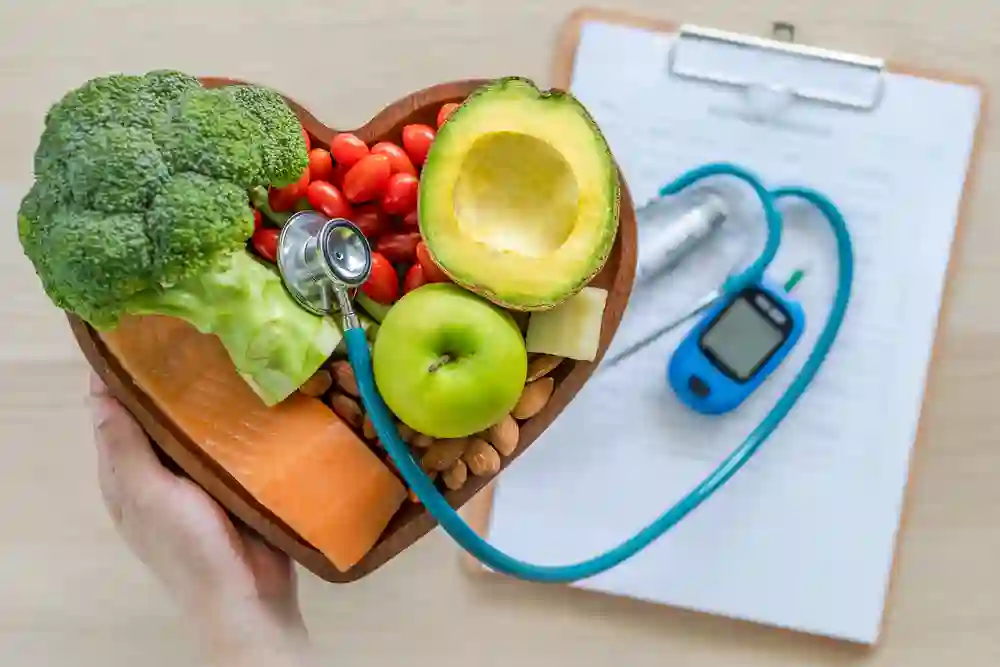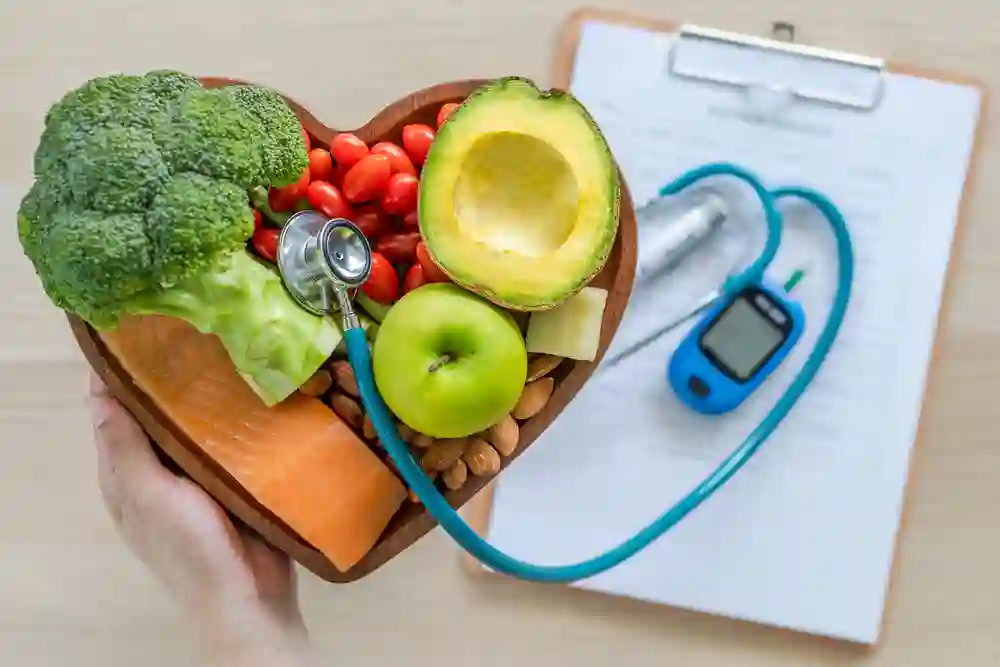There is no one-size-fits-all best diet for type 2 diabetic, but there are some general dietary guidelines that can help. A healthy diet for type 2 diabetes should include: -Plenty of fruits, vegetables, and whole grains
-Moderate amounts of lean protein -Limited amounts of saturated and trans fats, as well as simple carbohydrates -An overall calorie level that helps you achieve or maintain a healthy weight
In addition to following a healthy diet, people with type 2 diabetes should also aim to get regular physical activity.
When it comes to type 2 diabetes, there is no one-size-fits-all diet. However, there are some general dietary guidelines that can help people with this condition manage their blood sugar levels and avoid complications. A healthy diet for type 2 diabetes should include:
Plenty of fresh fruits, vegetables, and whole grains. These foods are packed with nutrients and fiber that can help regulate blood sugar levels. Lean protein sources such as fish, chicken, beans, and tofu.
Protein helps the body repair cell damage and maintain a healthy metabolism. Healthy fats such as olive oil, nuts, seeds, and avocados. These fats can help improve insulin sensitivity and promote satiety after meals.
Diabetes Foods to Eat | Diabetes Control Tips | Type 2 Diabetes Diet | Type 1 diabetes
Type 2 Diabetes Food List
If you have the best diet for type 2 diabetic, your body does not use insulin properly. This is called insulin resistance. As a result, glucose (sugar) builds up in your blood instead of being used for energy.
To help control your blood sugar levels, you will need to eat healthy foods and be active. You may also need to take diabetes medicines or insulin. Your healthcare provider will create a diabetes care plan for you that includes:
• A list of the types of food you should eat in order to control your blood sugar • How much food you should eat • When you should eat
• An exercise plan Here are some general tips for eating healthy with type 2 diabetes: • Eat breakfast every day.
• Do not skip meals. Eating regular meals helps to control blood sugar levels. • Spread your carbohydrates throughout the day.
Carbohydrates raise blood sugar levels more than other nutrients do. By spreading them out, you can help keep your blood sugar levels from going too high after eating. • Include protein in every meal and snack.
Protein does not raise blood sugar like carbohydrates do, so it can help keep your blood sugar level from going too high after eating carbohydrate-rich foods. Good sources of protein include lean meats, poultry, fish, tofu, beans, nuts, and seeds.
Type 2 Diabetes Diet Sheet
The best diet for type 2 diabetic is a healthy eating plan that helps to control blood sugar levels and can help prevent or delay the onset of type 2 diabetes. It is important to eat a variety of healthy foods, including plenty of fruits, vegetables, whole grains, lean protein, and healthy fats. A diet for type 2 diabetes should be individualized based on a person’s specific health needs and goals.

There are several types of dietary approaches that can help people with the best diet for type 2 diabetic manage their blood sugar levels. The most common approach is carbohydrate counting, which involves tracking the number of carbohydrates you eat each day and making sure to stay within your recommended limit. Other approaches include following a low-glycemic diet, which focuses on foods that have a lower impact on blood sugar levels; eating smaller meals more frequently throughout the day; and reducing the overall amount of calories you consume each day.
Making lifestyle changes such as losing weight if you are overweight, getting regular exercise, and quitting smoking can also help improve blood sugar control in people with type 2 diabetes. In some cases, medication may also be necessary to manage blood sugar levels effectively.
What is the Best Diet for a Diabetic Person
A diabetic diet is a diet that is used by people with diabetes mellitus or high blood glucose to minimize symptoms and dangerous consequences of the disease. While there is no single diet for all people with diabetes, all diets have a few things in common: they are high in fiber, low in saturated fat, moderate in animal protein, and contain a variety of fruits, vegetables, and whole grains. There are three main types of diabetes diets: the exchange list diet, the carbohydrate counting diet, and the glycemic index diet.
The exchange list diet divides foods into six groups: starches, fruits and fruit juices, milk and yogurt, meat and meat substitutes, fats, and sweets. Each group is exchanged for another group of similar nutritional value; for example, one starch exchange can be swapped for one-half cup of cooked rice or one slice of bread. This system makes it easy to create meals with the proper balance of carbohydrates, proteins, and fats.
The carbohydrate-counting diet involves keeping track of the number of carbohydrates you eat each day. Carbohydrates are found in many foods such as bread, cereals & other grain products; starchy vegetables like potatoes & corn; fruits; milk & yogurt; desserts; sugary drinks; as well as some nuts & seeds. You will need to work with a registered dietitian to learn how many grams of carbohydrates you should eat at each meal and snack time based on your personal dietary needs.
The glycemic index (GI) is a measure of how quickly blood sugar levels rise after eating a particular food. Foods that rank high on the glycemic index raise blood sugar levels more rapidly than foods that rank lower on the index. A food’s ranking depends on several factors including how much sugar it contains compared to other foods (it’s content), what type(s) Of sugar it contains (fructose vs glucose vs sucrose), it’s a cooking method (boiled vs fried), etcetera.
The glycemic load takes into account both the quality AND quantity Of carbs In A given food – not just ONE factor as GI does. For instance, watermelon has A HIGH GLYCEMIC INDEX but because it’s mostly water, its GLYCEMIC LOAD Is LOW. So when choosing foods, always consider both their GLYCEMIC INDEX AND their GLYCEMIC LOAD.
What is the Best Diet for Type 2 Diabetes to Lose Weight
If you have the best diet for type 2 diabetic, you know that managing your weight is key to keeping your blood sugar levels in check. But what is the best diet for type 2 diabetes when it comes to losing weight? The answer may surprise you – there is no one-size-fits-all answer to this question.
Instead, the best diet for type 2 diabetes will vary depending on your individual needs and goals. That said, there are some general guidelines that can help you create a healthy eating plan that will both help you lose weight and manage your blood sugar levels. Here are a few tips to get you started:

1. Incorporate more fiber into your diet by eating plenty of fruits, vegetables, and whole grains. Fiber helps slow down digestion and keep blood sugar levels from spikes. It also adds bulk to your meals which can help you feel fuller longer and prevent overeating.
2. Cut back on refined carbohydrates like white bread, pasta, and pastries as well as sugary drinks like soda and fruit juice. These foods tend to cause quick spikes in blood sugar levels which can be difficult to manage if you have diabetes. Instead, opt for complex carbs like whole grain bread and pasta or starchy vegetables like sweet potatoes and squash. And be sure to drink water or unsweetened tea instead of sugary beverages.
3 . Choose lean protein sources such as grilled chicken or fish, tofu, legumes, and eggs.
Not only do these foods provide essential nutrients but they also help stabilize blood sugar levels after meals. Avoid processed meats such as bacon or sausage as well as full-fat dairy products which can contribute to weight gain.
4. Limit unhealthy fats such as those found in fried foods, potato chips, and cookies. Instead focus on getting healthy fats from nuts, seeds, olive oil, and avocado. Not only do these foods taste great but they also offer numerous health benefits including improving insulin sensitivity
5. Create a calorie deficit by eating fewer calories than you burn each day. This doesn’t mean starving yourself – instead, focus on making small changes such as cutting back on portion sizes or choosing lower-calorie snacks throughout the day.
Diabetes Diet Menu
If you have the best diet for type 2 diabetic, your body cannot make or properly use insulin. This leads to high blood sugar levels. A diabetes diet is a healthy-eating plan that’s naturally rich in nutrients and low in fat and calories.
Key elements are fruits, vegetables, and whole grains. In fact, a diabetes diet is the best eating plan for almost everyone. The goal of a diabetes diet is to provide your body with the nutrients it needs while keeping your blood sugar level in your target range — not too high (which can cause damage to blood vessels and lead to serious health problems) and not too low (which can cause symptoms like dizziness and shaking).
Achieving this goal requires planning ahead and paying attention to what you eat and drink. A registered dietitian can help you create a diabetes diet menu plan that fits both your nutrition needs and your lifestyle.
Diet for Diabetes Type 2
If you have the best diet for type 2 diabetic, your body cannot make or properly use insulin. This leads to high blood sugar levels. Over time, high blood sugar can damage your nerves and blood vessels.
A proper diet is a crucial part of managing type 2 diabetes. It can help you control your blood sugar levels and lose weight. Here are some tips on what to eat:
1) Fill up on fiber: Fiber helps slow down digestion and absorption of sugar, which helps keep blood sugar levels in check. Good sources of fiber include legumes, whole grains, nuts, and seeds.
2) Limit refined carbs: Refined carbs are quickly digested and absorbed into the bloodstream, leading to spikes in blood sugar levels. Avoid white bread, pastries, cookies, and other processed foods made with white flour. Instead, opt for whole-grain bread and other complex carbs like quinoa and brown rice.
3) Include healthy fats: Contrary to popular belief, not all fats are bad for you. In fact, certain types of fat can help improve insulin sensitivity and regulate blood sugar levels. Good sources of healthy fats include avocados, olive oil, nuts, seeds, and fatty fish like salmon.
What is the Best Diet for Type 2 Diabetes?
If you have the best diet for type 2 diabetic, the best diet for you is one that helps control your blood sugar and makes healthy food choices. A good diet for type 2 diabetes includes eating mostly fruits, vegetables, and whole grains; choosing lean protein sources like chicken, fish, and beans; limiting saturated and Trans fats; avoiding sugary drinks; and watching your portion sizes. You may need to make some other changes to manage your diabetes as well, such as taking medication or exercising more often.
But a healthy diet is a vital part of any treatment plan.
What Foods Should a Type 2 Diabetic Avoid?
There are a few key things to remember when it comes to the best diet for type 2 diabetic. First, aim to include plenty of fiber-rich foods in your meals and snacks. This will help to regulate blood sugar levels and keep you feeling full longer.
Second, focus on healthy fats like olive oil, avocados, nuts, and seeds; these will help promote insulin sensitivity. Third, choose lean protein sources such as grilled chicken or fish, tofu, legumes, and eggs. And finally, limit your intake of refined carbohydrates like white bread, pastries, and sugary drinks.

When it comes specifically to foods that Type 2 diabetics should avoid, there are a few that stand out. First up is white rice – while it may seem like a harmless grain, it’s actually high on the glycemic index which means it can cause spikes in blood sugar levels. Other refined carbs like white flour and pasta should also be avoided for the same reason.
Next is anything made with trans fats – these are found in processed foods like margarine and baked goods made with shortening or partially hydrogenated oils. Trans fats can raise bad cholesterol levels and increase the risk of heart disease so they’re best avoided altogether. Finally, watch out for added sugars which are often hidden in packaged foods under aliases like sucrose or corn syrup – look for these on ingredient lists and avoid them if possible.
In general, following a healthy diet is the best way to manage type 2 diabetes (and prevent its onset if you don’t already have it). Eating plenty of fruits vegetables, whole grains, lean protein, and healthy fats, and limiting processed foods, sugary drinks, red meat, and saturated fats will all help keep blood sugar levels in check.
What Foods Can Diabetics Eat Freely?
There are many misconceptions about what people with diabetes can and cannot eat. The truth is that there are no foods that are off-limits for diabetics, but some foods should be eaten in moderation. Here is a list of some of the best foods for diabetics to eat:
1. Whole grains: Whole grains are packed with fiber, which can help regulate blood sugar levels. Choose whole-grain bread and pasta, or try incorporating quinoa or brown rice into your diet.
2. Leafy greens: Dark leafy greens like spinach and kale are low in calories and carbohydrates, and high in vitamins and minerals. They’re also a good source of fiber, which can help with blood sugar control.
3. Fatty fish: Fatty fish like salmon and tuna are rich in omega-3 fatty acids, which have been shown to improve insulin sensitivity (1). This means they can help keep blood sugar levels under control. Aim to include fatty fish in your diet at least twice per week.
4. Nuts and seeds: Nuts and seeds contain healthy fats, fiber, protein, and vitamins and minerals like magnesium—which is important for diabetes management (2). Snack on a small handful of nuts or seeds instead of sugary snacks to keep your blood sugar levels stable throughout the day.
5. Eggs: Eggs are a great source of protein as well as choline—a nutrient that helps with insulin resistance (3).
What is a Good Breakfast for a Type 2 Diabetes?
A good breakfast for someone with the best diet for type 2 diabetic is one that includes a protein source, whole grains, and healthy fats. A protein-rich breakfast may help to regulate blood sugar levels and provide lasting energy throughout the morning. Good sources of protein include eggs, yogurt, cottage cheese, lean meats, or tofu.
Whole grain options include oatmeal, whole grain toast, or quinoa. Healthy fats can be found in avocados, nuts, seeds, or olive oil. Adding a few vegetables to your breakfast is also a great way to get in some extra nutrients.
Conclusion
This blog post provides information on the best diet for type 2 diabetics. The author recommends a diet that is high in fiber and low in sugar. This diet will help to control blood sugar levels and improve overall health.